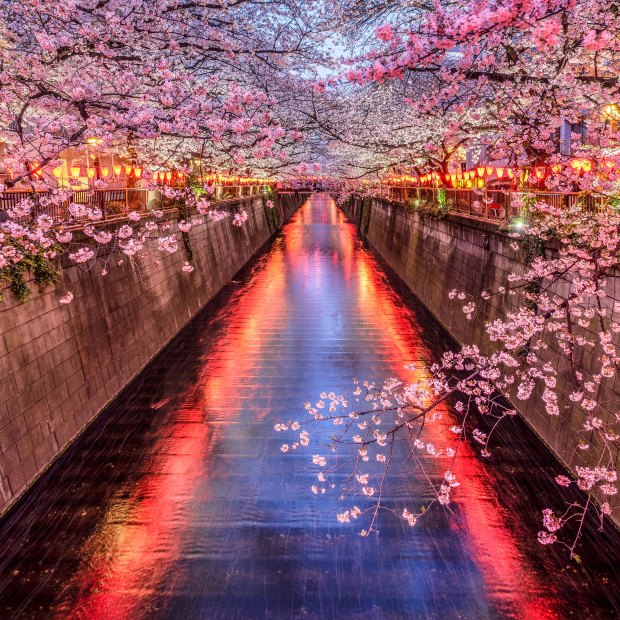
Spring ushers in cherry blossom season in Japan.Credit: Getty Images/iStockphoto
Swanning around the Mediterranean in midsummer may sound fabulous in theory but in reality nowadays the heat can be hideous, the queues will break your heart and the risk of heatstroke can be real. No wonder, then, that the relatively new concept of “coolcations” – holidaying in destinations with temperate climates or choosing to travel outside of summer – is becoming the latest catchcry in travel around the globe.
Yvette Thompson, Intrepid Travel’s general manager of sales and marketing in Australasia, says interest in shoulder-season travel to Spain, Italy, Portugal and France has spiked by up to 45 per cent from last year, leading to scheduling of more shoulder-season departures.
The benefits of travelling outside peak periods, she says, include not only cheaper prices but “the reception you get from the community is also warmer”.
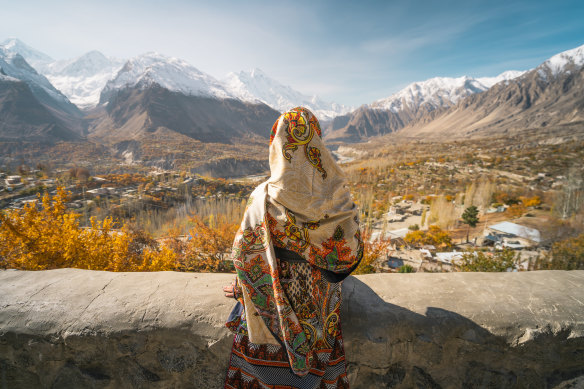
Autumn brings colour and agreeable temperatures to the Hunza valley in Gilgit Baltistan in Pakistan.Credit: Getty Images/iStockphoto
Intrepid hopes to do its bit to iron out over-tourism by promoting lesser-visited destinations through its annual “not hot list”. The 2025 list is topped by Pakistan’s Gilgit-Baltistan (an adventurous destination renowned for its spectacular mountainscapes), followed by Greenland’s Disko Island and Australia’s Cape York.
Simon Bell, Wendy Wu Tours Australia’s managing director, says autumn and spring are already peak season for its most popular tour, Japan Uncovered.
“People chase that cherry blossom experience in spring and [colourful foliage] in autumn,” he says. “It’s also a more comfortable time of year to travel.”
He says older travellers, who are the company’s main market, are already wise to timing their travels outside hot months and aren’t swayed by social media trends such as #Eurosummer.
But if coolcations seem a new phenomenon, think again. Two years ago, Wendy Wu Tours launched a Christmas collection of tours to countries such as Japan, China, India and Vietnam, which has proved a hit.
“We doubled departures this year because of demand,” says Bell. “Very well-travelled people are gravitating to these times of year when it’s actually not as busy, to get away from crowds.”
Chad Carey, Chimu Adventures’ managing director, says for some destinations such as Peru, the company encourages travellers to visit outside peak season.
“June-July is peak season for Machu Picchu – so much so that towns are kind of overrun,” he says.
“We don’t send many people then – we direct them to the shoulder seasons because it’s a better experience. You’re not there with the hordes.”
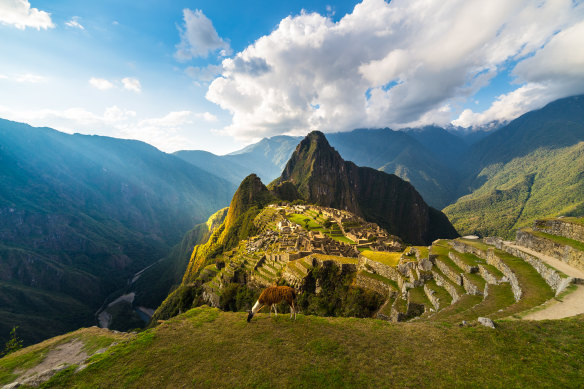
Shoulder season trips to Machu Picchu avoid the throngs visiting in summer.Credit: Getty Images/iStockphoto
Even though June-July is a popular time to visit because of clearer skies, he says “the feeling when you’re there is much more dramatic if there are a few clouds”.
“You get better photos and it’s a cloud forest, right? It’s meant to have clouds. It has a more enigmatic feel to it, I think.”
Savvy travellers who skirt peak season on Arctic cruises can also score unexpected natural bonuses. “A lot of ships, at the end of their season, go from Svalbard … down the east coast of Greenland and finish in Iceland,” he says.
“At that time of year, there’s also a chance you’ll see the Northern Lights when you’re up in Greenland, so you get extra bang for your buck.”
Here’s Traveller’s selection of 10 of the hottest ways to take a coolcation in a rapidly warming and crowded world as well as five more closer to home.
Train
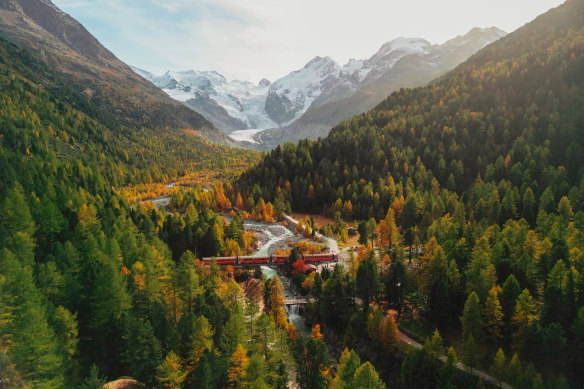
Piz Bernina in the Swiss Alps in autumn, the Morteratsch glacier in the distance.Credit: Getty Images
The coolcation An eight-day Contrasts of Switzerland, Switzerland – an almost-full circumnavigation of the alpine country by scenic train.
How cool Early-season departures could have you tramping through fairytale snow scenes in St Moritz and even schussing down Zermatt’s ski runs (April temperatures can drop to 1 degree).
Tell me more Billed as the world’s first “Swisstainable” tour, the itinerary makes the most of Switzerland’s jaw-dropping scenic trains and routes. April’s changeable weather possibly adds a memorable snow-dome quality to mountain segments. The tour kicks off in Zurich, finishing its clockwise rail journey in Lucerne.
Don’t miss Two optional Lucerne tours – a funicular/open-air cable-car ride up Mount Stanserhorn and a horse-drawn carriage ride to a raclette tasting in an Engelberg barn – both outstanding.
Essentials Go either end of the April-September season for cooler temperatures and fewer crowds, from $6615 a person twin-share. See trafalgar.com
Cruise
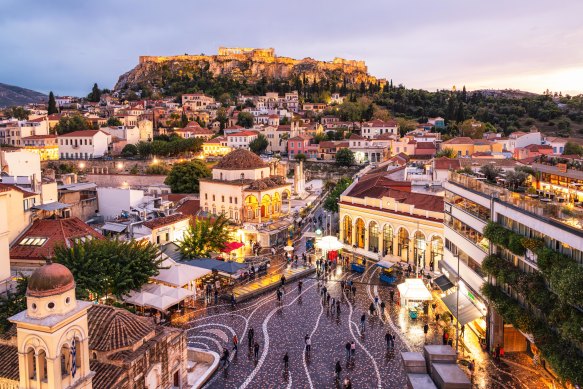
Athens’ Monastiraki Square and Parthenon attract fewer crowds in autumn.Credit: Getty Images
The coolcation Many cruise lines ply the eastern Mediterranean, and an eight-day Ancient Mediterranean Treasures Athens-Istanbul cruise runs through the northern winter.
How cool In December, temperatures in Athens average 9-15 degrees, and in Istanbul, 5-11 degrees. This means you don’t have to hit the major sights at sparrow’s to avoid heatstroke.
Tell me more Viking’s website cleverly includes a section called Quiet Season Mediterranean – an initiative that will be applauded by anyone who has struggled with the Med in searing summer heat. It won’t be the weather for a dip, but the pay-off is pleasant conditions for shore excursions as well as stops in Kusadasi (the gateway to wondrous Ephesus), Rhodes and Crete.
Don’t miss This itinerary includes an excursion to Ephesus, one of the best-preserved cities of antiquity. Take to the air in an ultralight aircraft to see the ruins from above as an optional extra.
Essentials December 2024 departures are available, from $4445 a person twin-share. See vikingcruises.com.au
Explore
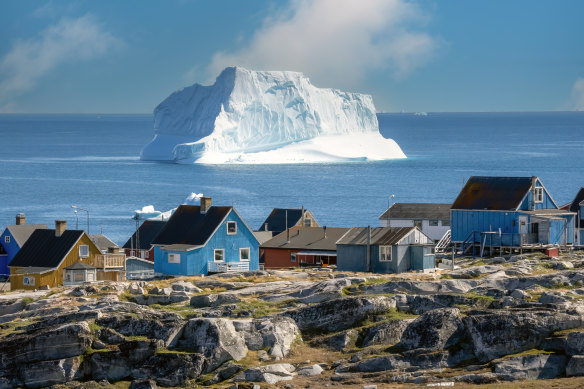
There’s not much cooler than icebergs drifting along the south coast of Disko Island.Credit: Getty Images/iStockphoto
The coolcation A 10-day Greenland Expedition. This land-based exploration includes a two-day hike on a glacier.
How cool In Nuuk, Greenland’s capital and this trip’s starting point, summer temperatures average from 2-11 degrees when this expedition takes place; it’s no warmer in Ilulissat (which translates to “iceberg” and is the base for most of this trip) but it can reach zero here. The most surprising aspect might be the midnight sun: on June 21 in Nuuk, the sun sets at 1.03 am and rises at 3.53 am, creating constant civil twilight (pack an eye-mask if you want sleep).
Tell me more Nuuk’s international airport opens on November 28, so Greenland is on the brink of becoming one hot new “cool destination”. Two more airports will follow by the end of 2026 (in Ilulissat and Qaqortoq in south Greenland).
Don’t miss The public ferry to Disko Island, which chugs through iceberg-strewn waters, is hailed as the world’s most beautiful boat ride.
Essentials Departures from July to September only, from $9450 a person twin-share. See intrepidtravel.com
Walk
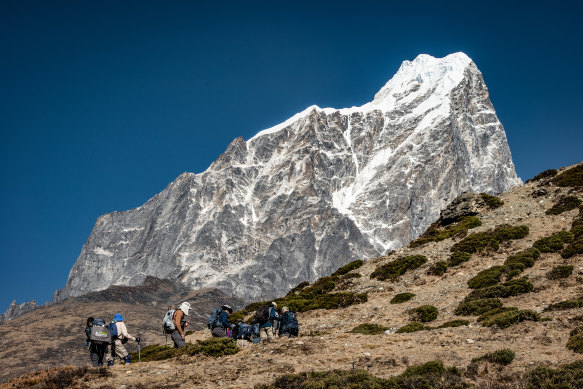
World Expeditions is marking its 50th anniversary with seven Nepalese treks.Credit: Tim Charody
The coolcation Choose from 13 to 30 days of trekking Nepal, complete with a high-altitude banquet finale.
How cool Namche Bazaar, the Sherpa capital of Nepal, averages 1-6 degrees in September; it also averages 23 days of rain and 16 days of snow, so conditions can be challenging. But the pay-off – views of Mt Everest with an experience of hospitable Sherpa culture - is colossal.
Tell me more Adventure travel pioneer World Expeditions is marking its 50th anniversary with seven Nepalese treks that cater for beginners through to experienced trekkers. No matter what level you’re at, everyone will meet at Thyangboche in the Khumbu Valley next September 24 for a three-course feast that doubles as a company birthday party.
Don’t miss One of these treks, the challenging 16-day Khumbu Valley Explorer, is led by Tim Macartney-Snape – a mountaineer famed as the first Australian to summit Everest without supplemental oxygen.
Essentials Departures are staggered from August 30, from $3890 a person twin-share. See worldexpeditions.com
Tour

A Japan highlights tour will take in geography, botany … and Tokyo’s Shibuya Crossing. Credit: Getty Images
The coolcation An 18-day Japan Uncovered tour – an itinerary popular with those who want to experience cherry blossoms or autumn foliage while hitting classic sights such as Mt Fuji (some departures are dedicated to solo travellers).
How cool The operator’s website includes average monthly temperatures and rainfall for each major city included on this tour – for example, Kyoto averages 14 degrees and 116 mm of rain in April (cherry blossoms usually peak here on April 1).
Tell me more This greatest hits tour includes everything most first-timers to Japan want to see, from bathing snow monkeys and free-ranging deer to Hiroshima’s Peace Memorial Park and Tokyo’s Shibuya Crossing. Helpfully, the company includes an indication of how many hours you’ll spend on your feet each day.
Don’t miss Guests on May departures will witness the Fuji Shibazakura Festival – an extraordinary pink, white and purple carpet of moss phlox blooms with Mt Fuji as a backdrop.
Essentials Tour departs March to November but May departures have a botanical bonus (see above), from $12,880 a person twin-share. See wendywutours.com.au
Drive
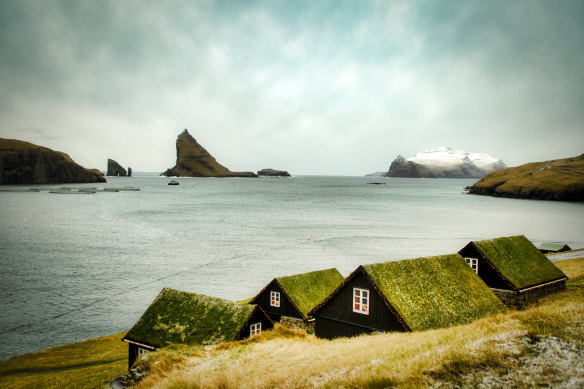
There will be few other travellers on the roads of the Faroe Islands.Credit: Getty Images/iStockphoto
The coolcation A six-day self-drive family adventure tour of the Faroe Islands – visited by only about 110,000 people each year.
How cool These 18 windswept volcanic islands, halfway between Scotland and Iceland, are warmest in July and August, when the average tops out at 13 degrees.
Tell me more These far-flung North Atlantic islands are known as a bird-watcher’s paradise – meet a puffin colony and take a boat to sea cliffs that are home to guillemots, shags and eiders. Meet the island’s shaggy-maned ponies (mostly Icelandic but also the rarer Faroese horse) and take the family hiking to an ancient Viking battleground.
Don’t miss 50 Degrees North calculates the CO2 emissions per person per day on its tours and fully offsets emissions.
Essentials May to August, from $5237 a person twin-share. See fiftydegreesnorth.com
Encounter
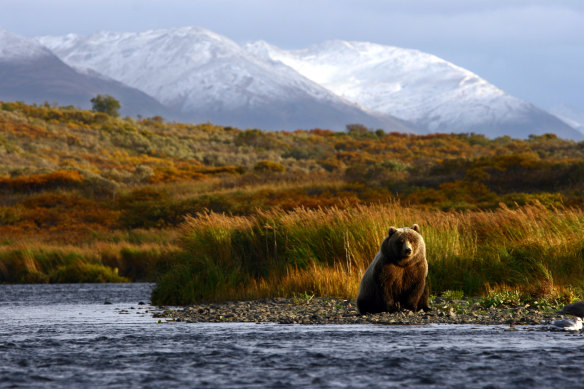
Bear-spotting season on Alaska’s Kodiak island.Credit: Getty Images/iStockphoto
The coolcation Cruise the Alaska Marine Highway to Kodiak Island, Alaska – the US’s second-largest island is home to the world’s largest bears.
How cool The temperature in the City of Kodiak, the island’s largest town, peaks at 16 degrees in August.
Tell me more You could easily fly to Kodiak – but where’s the romance in that? Head to Homer to catch the overnight ferry (the journey takes nine hours) and enjoy the camaraderie of being with others also venturing along the (aquatic) road less travelled.
Don’t miss Take a float plane ride to Karluk Lake to stay at Kodiak Brown Bear Centre and Lodge (packages range from four to eight days), owned by the Alutiiq people. Head out bear-spotting twice daily.
Essentials A four-day lodge stay in 2025, available between July and September, starts from $US6998 a person twin-share, a one-way journey from Homer to Kodiak aboard the ferry costs from $US91 adult. See kodiakbearcenter.com; dot.alaska.gov
Adventure
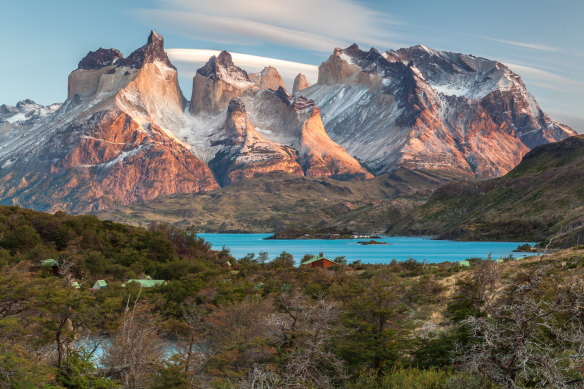
Torres Del Paine National Park, Chile. Credit: Getty Images
The coolcation A nine-day Signature Patagonia tour, Chile and Argentina – a lodge-based tour allowing deep exploration of Torres del Paine National Park’s dramatic landscapes.
How cool With the park’s climate influenced by strong winds, ocean currents, the Andes and the Southern Patagonian Ice Field, expect wildly changeable weather on any given day. In summer, temperatures in the park range from 6-20 degrees but this is also when winds are at their strongest.
Tell me more Explore Torres del Paine’s snaggle-toothed mountains, glaciers and pampas by horseback, boat or foot. Finishing in El Calafate (which has flights to Ushuaia), the tour is billed as an ideal pre- or post-Antarctica cruise option.
Don’t miss Visit an estancia (ranch) on one of the lodge excursions to learn about the region’s gaucho (cowboy) culture.
Essentials Departs daily from October to April, from $8916 a person twin-share. See chimuadventures.com
Celebrate
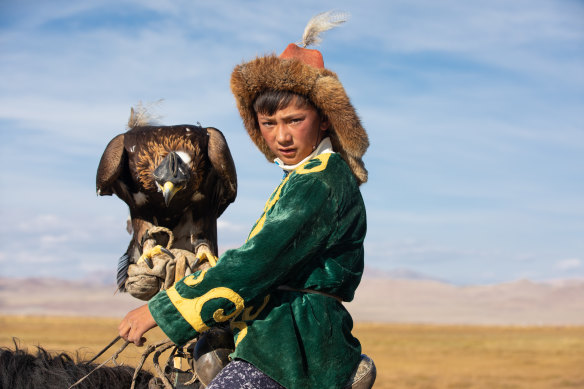
Take in eagle hunting in Mongolia before the mercury plummets.Credit: Getty Images/iStockphoto
The coolcation A 16-day tour taking in Mongolia’s Golden Eagle Festival and Kazakhstan, Central Asia
How cool Mongolia’s capital of Ulaanbaatar averages 1-16 degrees in September and there’s little rainfall; the mercury starts plunging into the minuses from October.
Tell me more Crooked Compass founder Lisa Pagotto will lead this journey, which combines two off-the-beaten-path destinations bordering China. Photography enthusiasts will embrace the chance to snap dramatically costumed falconers on horseback.
Don’t miss Embrace a simpler lifestyle during your overnight stays in a ger camp near the eagle festival and, in Kazakhstan, learn how to make baursak, a fried puffy bread.
Essentials Starts September 11, 2025 from Ulaanbaatar, from $14,646 a person twin-share. See crooked-compass.com
Save
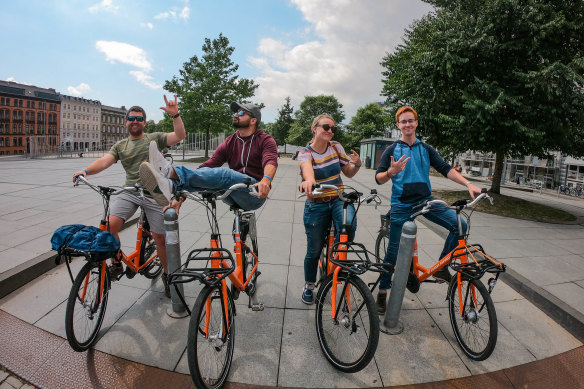
Biking through Scandinavia’s coolest urban centres.Credit: Contiki
The coolcation A 10-day Scandinavia in winter – a budget trip around three Nordic countries for those aged 35 and under.
How cool In Stockholm, the mercury plunges, averaging -3 degrees over January and February, with highs only a few degrees above zero.
Tell me more Starting in Copenhagen before kicking on to Oslo and Stockholm via several rural stops, this tour includes urban biking, meeting huskies and snowshoeing. Most notably, this tour is priced at just 58 per cent of the summertime version (which is also slightly longer at 12 days).
Don’t miss In Sweden, there’s the chance to spend the day on the ski slopes – a welcome activity in a notoriously expensive destination.
Essentials From October to March, from $2426 a person twin-share. See contiki.com
Five cooler ways to spend summer near home

Bridestowe Estate is among the world’s largest lavender farms.Credit: Getty Images/iStockphoto
Smell Tasmania’s Bridestowe Estate – the world’s largest privately owned lavender farm, 50 kilometres north-east of Launceston – looks its photogenic best in summer. Its rows of French lavender (the only variety suited to perfume and cooking) total some 200 kilometres, creating a stunning backdrop when blooms peak from mid-December to mid-January. An entry fee applies from December 1-January 31 (earlybird tickets cost $15 a person). See bridestowelavender.com.au
Climb Conquer the Australian mainland’s highest peak. Getting to the top of 2228-metre Mt Kosciuszko is achievable for most people thanks to a chairlift from Thredbo village to the starting point at 1930m. From there, take the meandering elevated walkway that protects delicate alpine flora to reach the peak and those glorious panoramic views. See thredbo.com.au
Swim With a summertime maximum temperature hovering about 25 degrees, World Heritage-listed Lord Howe Island (on the same latitude as Port Macquarie) may present Australia’s most perfect beach climate. Snorkel in the sub-tropical island’s protected lagoon and gawk at coral, turtles and fish, or head to the wilder side to hand-feed throngs of kingfish, mullet, wrasse and spangled emperor. See lordhoweisland.info
Quaff The warmest month on New Zealand’s Waiheke Island, a short ferry ride from Auckland, is February when top temps average 24 degrees. Raise a glass of red (Waiheke’s specialty) to this most agreeable of temperature situations at one of the island’s 30-plus wineries and cellar doors. Some, such as Mudbrick, even serve up a view of the distant Auckland skyline. See mudbrick.co.nz
Swap Can’t make it to the South Pole? At the International Antarctic Centre next to New Zealand’s Christchurch airport, you can be buffeted in an “indoor” storm at -18 degrees, rugged up against the winds in a polar suit. See the little blue penguins being fed, head into the 4D theatre for more gusts plus a bit of face-misting, and go for a rollicking drive in an amphibious vehicle. See iceberg.co.nz